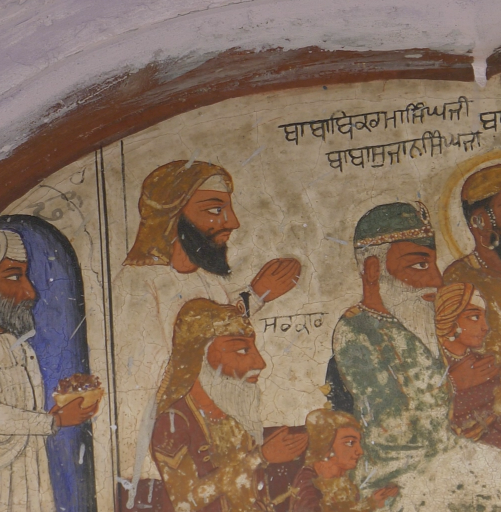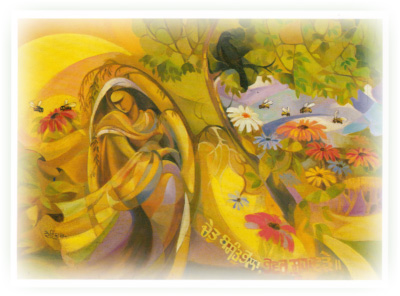AKAR, a village in the interior of Patiala district, possesses a historical shrine called Gurdwara Nim Sahib. The Gurdwara commemorates the visit of Guru Tegh Bahadur who, during one of his journeys through the Malva territory, put up here near a mm (margosa) tree, which still exists. The leaves of one of the boughs of this tree which leans over the shrine are tasteless while those on the rest of the tree possess their natural bitter taste. The miracle is attributed to Guru Tegh Bahadur, who is said to have pulled off a twig from this branch and used it to cleanse his teeth.
BHADAUR, a small town 25 km northwest of Barnala (30°22`N, 75°32`E) in Sangrur district of the Punjab, is sacred to. Guru Gobind Singh, who came here from Dina in December 1705 following the chase. The area was then an uninhabited jungle land, and it was only after the village ofBhadaur was founded by Baba Ala Singh, eighteenth century Sikh warrior and noble, that a shrine commemorating the Guru`s visit was established here.

BIKRAM SINGH BEDI, BABA (d. 1863), was the third and youngest son of Sahib Singh Bedi of Una, a lineal descendant of Guru Nanak. On Sahib Singh`s death in 1834, Bikram Singh suceeded to his father`s jagirs and position as preceptor to royal family of Lahore. After the deaths of Maharaja Kharak Singh and Prince Nau Nihal Singh, Baba Bikram Singh tried to bring about a reconciliation between Maharaja Sher Singh and his collateral Sandhanvalia sardars. Baba Bikram Singh felt irked when British troops were stationed at Lahore after the AngloSikh war of 1845-46.
DALIP SINGH (1894-1921), who fell a martyr at Nankana Sahib on the morning of 20 February 1921, was born to Karam Singh and Har Kaur in January 1894 at the village of Sahoval, in Sialkot district, now in Pakistan. Two of his three brothers having died young, Dalip Singh was brought up by his parents with extra attention and care. He was educated at Sarigia, Daska and Gujranwala. While at school, he developed a keen interest in Sikh history and gurbani, utterances of the Gurus, i.e. Sikh religious texts.
DHARAM SINGH, BHAI (d. 1921) was the youngest of the four sons of Bhai Sant Singh and Mai Hukmi, of the village of Bundala, in Amritsar district. He was only four years old when the family migrated to Chakk No. 71 Bundala Bachan Singhvala in the newly colonized district of Lyallpur. His education was limited to rudimentary knowledge of the Punjabi language which he could barely read in the Gurmukhi script. He was robustly built and enjoyed wrestling.






